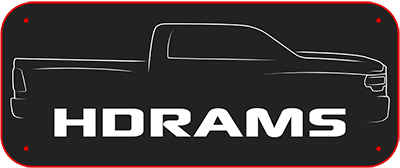56ram2500
Member
Well I guess I best go get my eyes checked as I missed it was a 2023You have a 2022, the OP has a 2023.
Well I guess I best go get my eyes checked as I missed it was a 2023You have a 2022, the OP has a 2023.
No, DEF is injected into the exhaust system after the DPF. It is sprayed into a chamber called the “SCR” (Selective Catalytic Reduction) where it mixes and reacts with the exhaust flow to remove Nitrogen Oxides (NOx) from the exhaust.So does DEF get burned in the engine? And how would I use more DEF?
You got it wrong. DPF, as the name suggest is a filter that catches soot, it has zero to do with CO2 or NOx emissions. All this modern emissions junk only reduces NOx at the expense of extra CO2 - more fuel burnt - more CO2 produced.Thanks for all the help.
As far as the 24 hour cycle I don't think that is even close. I drive 30 miles to work about 3-4 times a week. The idle down chart I have not found yet. I used to use 3 minutes, and later went to EGT when I had gages installed on my 5.9. Now the EGT will not come down in 3 minutes during a regen, but idling adds to the soot build up. Catch 22 here. Do you guys know if the dealer can adjust the regen cycle? Also the regen seems to take a very long time and fuel efficiency plummets.
All this emissions stuff just seems wrong and illogical to me. We are going to burn more fuel to reduce CO2? Meanwhile we trash the engines. There a some videos online showing the soot and carbon buildup in the intakes which in turn destroy efficiency. What I also find interesting is that Cummins Techs and MOPAR Techs will not give difinitive answers on what is best practice for avoiding trouble with this eco stuff.
Thanks again for the inputs.
All this modern emissions junk only reduces NOx at the expense of extra CO2 - more fuel burnt - more CO2 produced.
100% agreed!That’s the beauty of DEF, it lets the engine run optimally and deals with NOx downstream.
I rather get 100mpg DEF and have no EGR, but the reduced EGR in the 19+ trucks is pretty nice.
Definitely.That’s the beauty of DEF, it lets the engine run optimally and deals with NOx downstream.
I rather get 100mpg DEF and have no EGR, but the reduced EGR in the 19+ trucks is pretty nice.
Okay seems that we need an engineer to weigh in here. How can anything injected downstream of the engine's cylinder/combustion chamber increase fuel mileage? Let alone reduce EGR regen cycles.
On Friday night driving home from the hangar, I checked the DPF gauge, and it was still zero. 5 miles later it had jumped up to about 20%, but no regen cycle. Checked it another 5 miles later and it was back to zero. By the time I got home another 20 miles, I checked it again doing a 3 minute idle down, and it was back to 20%. Electronic sensors are in my experience not that reliable and thus the weak point in what "they" are trying to accomplish. When sensors fail or produce unreliable information in aircraft the system reverts back to a "manual" state for safety. Would appear to me that this wasn't done in the automobile world costing people lots of money in an effort force them to accept someone else's opnions.
I am all for clean air, but let's take a deep breath and do it right.
More load on the engine and more fuel burned.Okay, now we are getting somewhere. Very good explanation of the system AH64ID! This is starting to make sense. One question remaining what creates more DEF usage?
